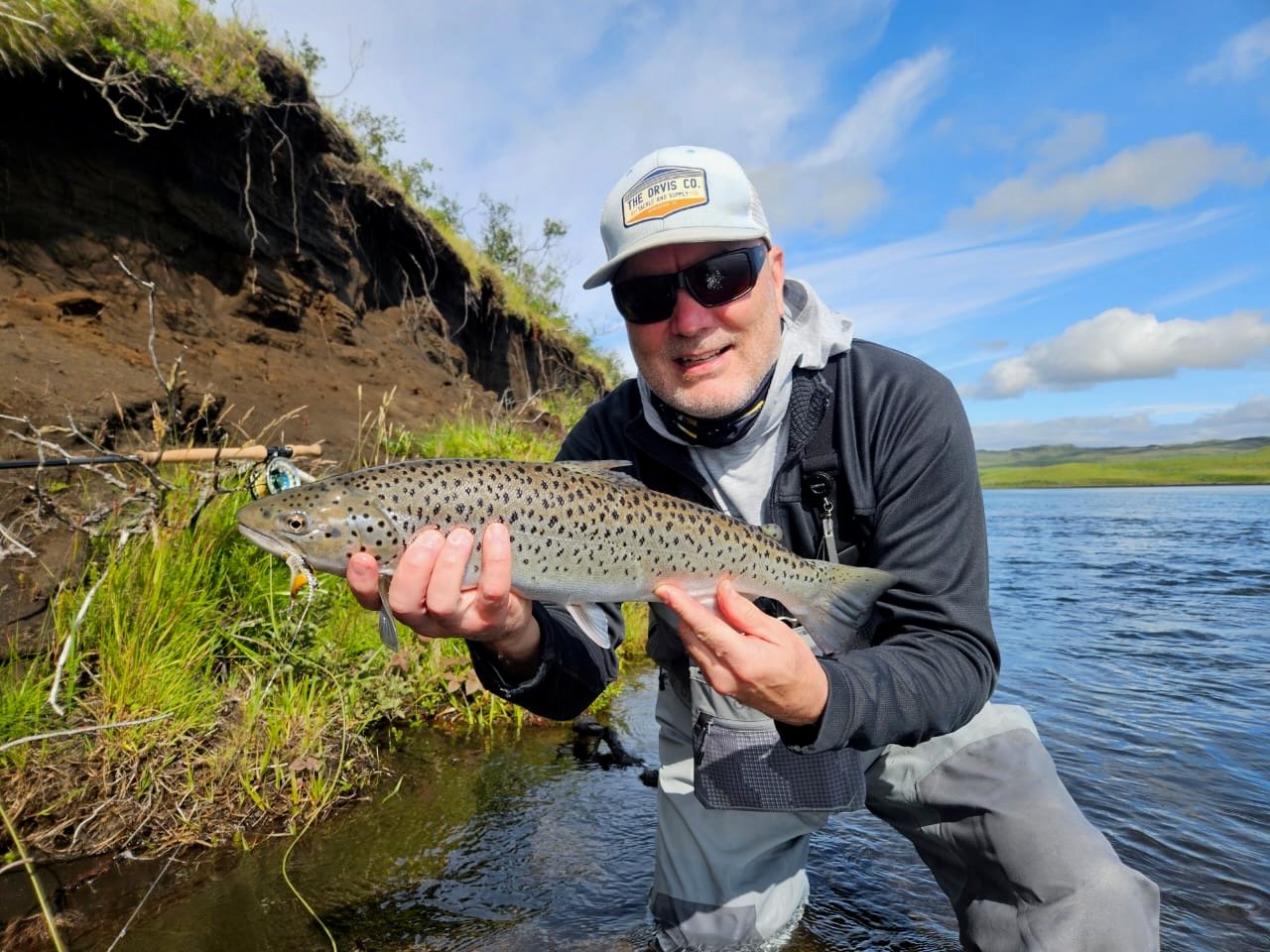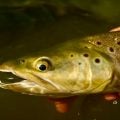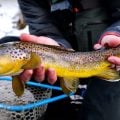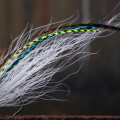Ask MidCurrent: What’s the Best Way to Retrieve a Streamer to Trigger Strikes?

A strip-and-pause retrieve took this sea-run brown, which was holding in off-color water. Photo: Kristjan Rafnsson
Question: I live in Texas and fish mostly for bass, but when I’m fishing streamers for trout, I feel like I need a way to “trigger” strikes. Can you help?
—Chad, TX (via the Ask MidCurrent form)
Answer: There are lots of different ways to strip streamers, and talking to a bunch of anglers about their favorite retrieves might yield a variety of different answers. Since you specifically asked about stripping retrieves, we will leave dead-drifting and swinging—both effective techniques under certain conditions—aside for the moment. But it’s important to note that there’s no “secret” stripping method that always works; experimenting with different retrieves is the best way to figure out which one triggers strikes that day.
Remember that streamers target a trout’s predatory instinct. Large, territorial trout behave differently from those trout gently sipping bugs on the surface. Streamer-eaters tend to hide out in ambush spots where they can attack prey, so focus on structure and cover, such as undercut banks, log jams, boulders, deep pools, or even shallow riffle edges with vegetation. Trout likely to eat a streamer often hold near the banks or in the shadows, ready to burst out at an unsuspecting baitfish.
Streamer fishing is a numbers game, so success often depends more on covering lots of water than on a precise fly pattern or stripping technique. If a fish is willing, it will usually smash the streamer on your first or second pass. So keep moving along the bank to find that aggressive fish, rather than camping on one spot. (One exception to this rule is when you’re fishing very cold or muddy water, where a trout might need extra casts or a slower presentation to entice a bite.)

In dirty water, use a retrieve that creates a commotion that trout can sense with their lateral line. Photo: Phil Monahan
Stripping Options
“Stripping” a streamer means actively pulling (retrieving) the fly line to impart life to your fly. This is where streamer fishing gets dynamic: you can strip fast or slow, steady or erratic, pause, twitch, or rip the fly through the water. Different retrieves can make your streamer act like different prey, and switching up your technique is often the key to provoking a strike. If you’re not getting any hits, vary your stripping technique until you hit on the one that the trout will respond to.
Generally, you’ll cast across or slightly upstream of your target, perhaps letting the fly sink for a bit, and then strip the fly back. Make sure you have constant control of the fly line, so you can make a strip set upon feeling a strike. Some common retrieve styles to try are:
Slow and Steady
Long, smooth pulls on the line, moving the fly at a leisurely pace. This mimics a baitfish or crayfish lazily swimming, and it often works best when fish are in a neutral or negative mood but will still grab an easy meal. In cold water or when trout are sluggish, a slow strip near the bottom can entice a bite when faster retrieves fail.
Ripping It
Rapid, continuous strips—sometimes even two-handed stripping for extreme speed—make your streamer dart aggressively through the water. This imitates a panicked baitfish trying to escape. A fast retrieve can provoke reaction strikes from territorial trout or those keyed up in warm water. For example, on rivers with slow pools or during warmer temperatures, speeding up can tempt fish that have a longer time to observe the fly, forcing them to decide quickly or lose the “prey.”
Mixing It Up
Incorporating pauses and little twitches during the retrieve is often the secret to drawing strikes. For instance, strip-strip, then pause for a second, maybe give a slight twitch with the rod tip, and then continue. The pause makes your streamer flutter or sink like a wounded baitfish that is stalling out—an easy meal for a trout. You’ll often get a strike at the moment you start to strip after a pause, as that sudden movement triggers the fish to pounce.
Twitching the fly during strips can also mimic an erratic, injured swimming pattern that alerts predatory fish. Use this mixed retrieve when trout are following but not committing, or when they seem interested but hesitant. If you ever see a trout boil at your streamer but not take it, that’s a prime signal to switch to a more erratic retrieve on your next cast. In practice, that could mean adding a couple gentle twitches and letting the fly hover for an extra moment. This change in behavior often seals the deal with a fish that refused a steady strip.

This Alaskan rainbow ate a twitched retrieve. Photo: Charles Hildick-Smith
Matching the Conditions
Stripping streamers works best when trout are actively chasing prey or when you need to attract fish from a distance. Here are the best times to employ faster or more aggressive stripping techniques:
Low-light periods (early morning, dusk, or overcast days): Trout are confident to chase and rely on their lateral line to feel prey moving. A faster or erratic retrieve creates vibrations and commotion that trout can home in on even when visibility is low.
Warm water or warmer seasons: when trout metabolism is higher (~50-65°F water) and they’re willing to move fast for food, a quick retrieve can take advantage of their energy.
In shallow water or pockets: A fast-strip retrieve lets you cast to structure (e.g. a log along the bank) and immediately animate the fly away, mimicking a baitfish darting out of cover. This can draw explosive strikes from fish hiding there. In fact, a common tactic is “pound the banks” – cast tight to the bank or structure and strip back out. The moving streamer coming off the bank is exactly what they expect a fleeing minnow to do.
When to use slower or more methodical strip techniques:
Cold water or post-front conditions: Trout might hug bottom and refuse to chase anything fast. A slow, deep strip (even just crawling the fly along) can get their attention.
Highly pressured fish: In areas where trout see lots of lures, a moderate retrieve with subtle twitches can appear more natural than a full-throttle strip, resulting in more takes.
Got a question for our experts? Click here!











